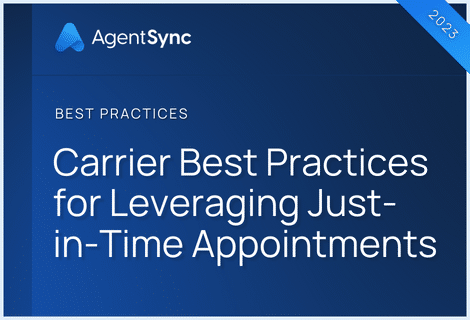

Claims response and processing is a notoriously tricky part of the industry, and the vagaries of keeping insurance adjusters properly licensed and in compliance is no small part of it. Companies that can take the pain out of insurance adjuster compliance make their own lives and that of their distribution partners far easier.
Between hurricane season, tornado season, and the general propensity of the country toward floods, fires, or blizzards, insurance adjusters have their work cut out for them regardless of which states they work in. And claims are generally a thankless, painful part of the insurance industry. So, with the industry struggling as a whole generation retires, maintaining seasoned adjusters is harder and more important than ever.
Retaining your adjusters for more than one season is about delivering value and being easy to work with, as a general rule. Making it easy for them and their agencies to stay in compliance can make you the preferred carrier of choice when seasons and contracts change.
Follow along and learn how you can turn adjusters into raving fans by taking the sting out of your compliance processes:
1. Turn adjuster licensing validation nightmares into a dream
Adjuster licensing reciprocity is a headache. Many states don’t require insurance adjusters to have a license at all. Others require licensing for general independent adjusters or public adjusters but not insurance carrier staff adjusters. And others still require insurance licenses for any adjuster no matter who signs their check.
These variations lead to massive confusion when working across state lines – if you don’t believe us, just check with the flurry of bulletins following Georgia’s slight verbiage change to its insurance adjuster licensing law.
(Okay, the TL;DR: Georgia previously limited adjuster licensing to “independent” adjusters, so staff adjusters from Georgia who wanted to get an adjuster license would get a designated home state (DHS) license from a different state. Then, Georgia eliminated “independent” from the law, so any adjuster in Georgia can now get a resident adjuster insurance license, which means a lot of people who have had DHS licenses in other states will have to switch over and it’s a ginormous pain in the neck.)
For insurance carriers, synchronizing data with a licensing source of truth (like AgentSync does) can verify that an adjuster license is up-to-date and valid, period. Instead of guessing at where and how an adjuster needs to be licensed, know the rules by keeping them baked in!
2. Make insurance adjuster onboarding speedy
There is no process in insurance where “speed equals satisfaction” is truer than in claims. Having a slow onboarding process that takes months to bring adjusters on will keep your business from speedily processing claims. And nothing is as disheartening to a new insurance adjuster as stepping into a situation where consumers are already upset by delays.
Recruit and retain both staff and independent adjusters by working with solutions that fully digitize the process, giving adjusters their own portal to provide information a single time (as opposed to typing and retyping information in multiple channels). Digital insurance solutions that use integrations and a single source of truth for data can take your onboarding from months to days, making both your adjuster experience and your claims processes miles better.
3. Add urgency to adjuster license applications without an emergency
When there’s a disaster, states open emergency adjuster portals that are incredibly speedy but overwrought with manual inputs. During non-emergent times, though, this process can be filled with the same manual inputs and far slower response times. Lags and drags pull on adjuster licensing, and back-and-forth over adjusters’ continuing education (CE) and designated home state (DHS) licenses and reciprocity can all be licensing bottlenecks.
Yet, many states have fully digital processes that could make nonresident licensing and reciprocity far easier. By using solutions that integrate with this state data, your insurance carrier can make applying for adjuster licenses in nonresident states far, far easier and quicker.
4. Use compliance solutions that provide high visibility into your adjuster data
Knowing how and where to most effectively deploy your adjusters is key to keeping them happy and staying efficient as an organization. When adjusters are swapping jurisdictions or have to switch clients in the middle of a claim, you’re exposed to both financial and regulatory risk.
Yet, if you rely on manual processes it can seem nearly impossible to get a transparent insight into who holds what adjuster licenses where. By using insurance technology solutions that deliver your data in an easy-to-grasp display, you can understand how to more effectively deploy your adjuster force and align your internal processes.
5. Make license renewals an opportunity to wow your claims adjuster force
What goes up must come down. What goes around comes around. And what must be applied for often must be renewed. For real, though, your adjusters may need to renew their relevant licenses on an annual or biannual basis. Those licenses all have different renewal dates and requirements, and any system that you can use that automates licenses, tracks continuing education, or otherwise keeps their licenses in force with less input and hand-holding from them can turn your adjusters into more. It can turn them into absolute superfans of your organization.
Of course, the opposite is true, as well. Adjusters who have to spend more time running after their own requirements or apply late for deadlines or trip around every jurisdiction trying to juggle requirements and timelines… They hate it. And if you add obstacles instead of streamlining that process and making it easier, you can bet your attrition costs are going to hurt after a while.
Turning adjuster compliance into your superpower
Compliance can be a massive pain point. But when you remove the pain, you can turn adjuster compliance into an absolute engine of growth.
For one thing, you’re reducing your overall risk by keeping adjusters (and, by association, the claims process) tighter from a compliance standpoint. That way, whether you’re onboarding or offboarding, you can scale your adjuster force at speed while staying in line with state regulations.
By keeping your adjuster force dialed up or down more quickly, you may also decrease instances of consumer complaints from the claims process. Decreasing complaints gives you a better shot at increasing your market share and reputation.
Of course, making your adjuster force into a fanatical base of promoters for your business is obviously a hot perk of transforming your insurance adjuster compliance processes. So, if you’re interested in making compliance an absolute superpower, schedule a demo with AgentSync today and see what we can do for you.

